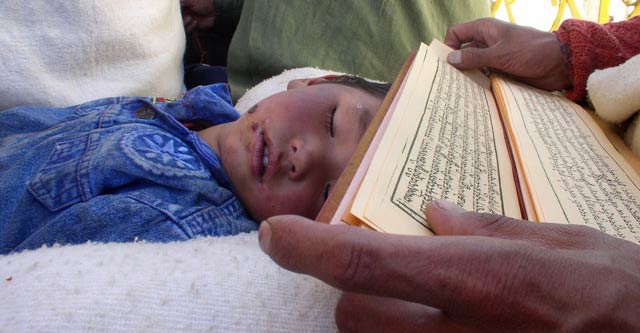24 november 2003 — offtrack
Tibetan script on the rocks
Take the countries with the lowest and highest elevations in the world, the Netherlands and Tibet. Is there any difference in the typography they produce? While the Dutch types are sometimes considered horizontal and flat-ly curved (thanks to Gerard Unger), the Tibetan script is surely the opposite. It’s a world of vertical, edgy and steep curves, like the mountains where Tibetain script was born.
The Tibetan culture, while slowly but surely vanishing from Tibet itself, continues to settle down in its temporary refugee state, Himachal Pradesh, India, as does the script. It appears most permanently on the stone cuts which carved deep into the rocky range of the Indian Himalaya. You are most likely to see a boulder with a huge mantra reading ‘on mani padme hung’ carved on it. Each syllable has its own colour and meaning. With chanting the mantra a practitioner receives a blessing from Avalokiteshvara, the buddha of compassion. As His Holiness the Dalai Lama is the incarnation of this divine deity, it’s no wonder that this mantra is so widespread.
Originally the Tibetan script was developed in the 7th century from a Kashmiri version of the Sanskrit script by the scholars who returned from India. This was the time when Buddhism was introduced and the vast need for its own literature began. Currently the spoken language differs greatly from the written form, so much so that as an outsider it’s extremely hard to know whether a letter should be pronounced or is silent (many entire written syllables are silent when spoken). So forget about learning to write Tibetan, just look at these photos instead. These were taken by Sami in Himachal Pradesh, India, while he was traveling there in the Autumn of 2003.






















